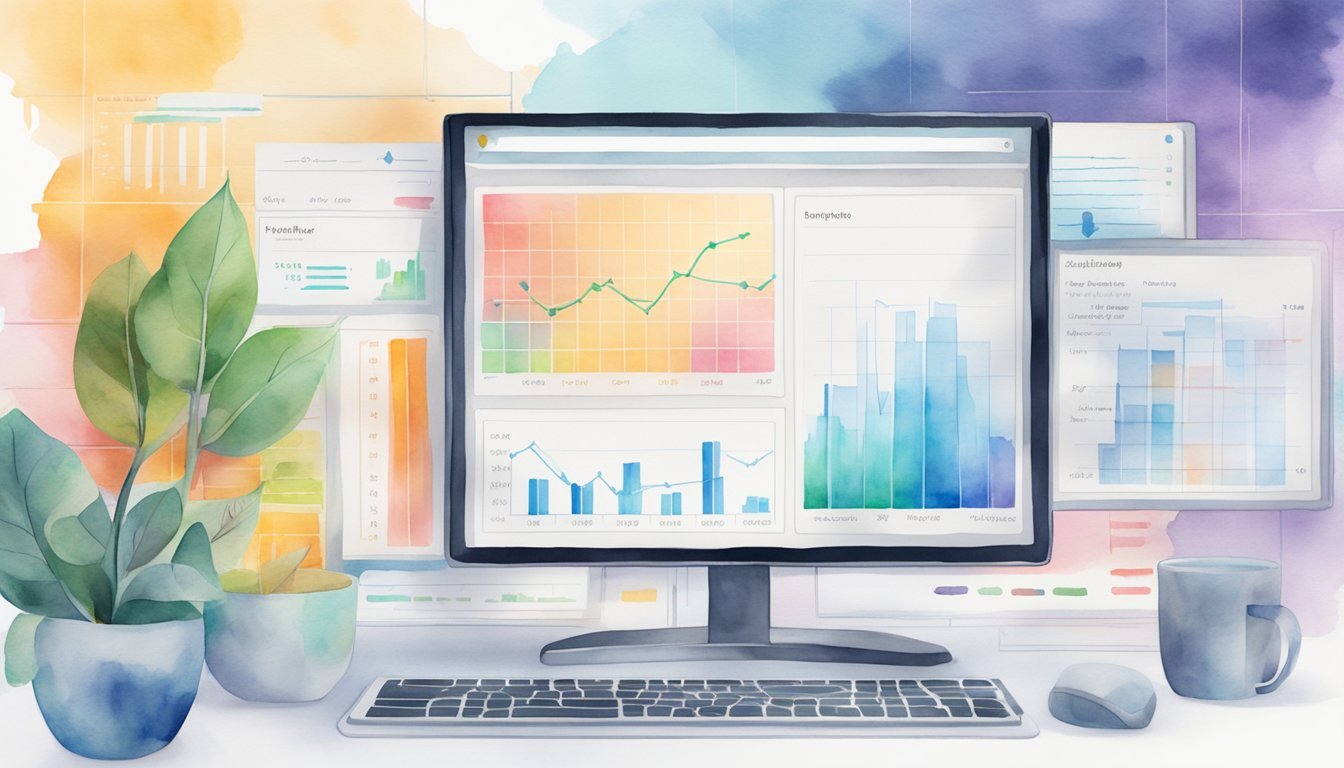3 AI-Assisted Methods to Identify Profitable Niche Markets Online: Expert Strategies for Success

In today’s digital age, finding profitable niche markets can be a game-changer for your online business.
The vast landscape of e-commerce means there’s immense competition, making it crucial to pinpoint specific areas where you can stand out.

Leveraging AI can streamline this process and provide accurate insights into niche markets.
By adopting AI-assisted methods, you can efficiently analyze vast amounts of data and identify profitable opportunities that may not be immediately apparent.
1) Keyword Analysis Tools
One of the best ways to find profitable niche markets online is to use keyword analysis tools.
These tools help you discover which keywords potential customers are searching for.
By identifying popular search terms, you can target niches with high demand but low competition.
AI-powered tools make keyword analysis easier and more accurate.
These tools use artificial intelligence to analyze large amounts of data quickly.
They can identify long-tail keywords that traditional tools might miss.
For example, instead of just “digital marketing,” you might find “digital marketing for small businesses” to be a more profitable niche.
Tools like tryrankify can help you find these hidden opportunities.
They provide insights into niche markets and help you create a focused strategy.
Similarly, Moz Pro offers detailed data and filters for advanced keyword research and backlink analysis.
Another useful tool is Copy.ai, which generates potential keywords with the right prompts.
It helps marketing teams create a list of keywords quickly, ensuring you have plenty to use in your projects.
Free tools can also be beneficial. Google Trends and Google Search Console offer insights into trending topics and keywords.
These free resources can help you understand what people are searching for and spot untapped niches in your own data.
Using these keyword analysis tools, you can find profitable niches and create content that attracts the right audience.
This will help you stand out in competitive markets and increase your chances of success.
2) Competitive Market Analysis
Analyzing your competition is vital when identifying profitable niche markets.
By understanding what your competitors are doing, you can spot gaps and opportunities.
AI can help by sifting through large datasets to find trends and analyze competitor strategies.
Tools like these can highlight what is working for other businesses in your niche.
You can use AI to monitor your competitors’ products, pricing, marketing tactics, and customer feedback.
For instance, you might learn that a competitor’s product has a gap that your business can fill.
Competitive analysis also includes keyword research.
AI tools can track which keywords are driving traffic to your competitors.
This data helps you refine your own strategy, ensuring you target keywords that have high potential.
Another method is social listening.
AI can scan social media platforms to gather insights on what people say about your competitors.
This information is valuable for understanding customer sentiment and identifying areas where you can do better.
Use AI to analyze market share and find out how well competitors are performing in your niche.
This can help you determine whether it’s worth entering a specific market or if you should look elsewhere.
Leveraging AI for competitive analysis gives you a clearer picture of the market landscape.
It helps you make informed decisions and identify opportunities that might not be obvious through traditional methods.
By using AI, you can stay ahead of trends and adapt quickly to changes in the market.
This ensures you remain competitive and can capitalize on new opportunities effectively.
3) Trend Spotting Software
When identifying profitable niche markets, trend spotting software is a powerful tool.
These tools help you discover emerging trends before they become mainstream.
One leading tool is Exploding Topics.
This software identifies trends that are about to gain significant traction, typically within a 12-24 month horizon.
It’s valuable for spotting new opportunities across diverse sectors.
Another notable tool is Google Trends.
It’s free and shows search volume history for any keyword.
While it helps analyze the popularity of search terms over time, it does have limitations.
It may not be as effective for discovering completely new trends.
For a more comprehensive solution, Brandwatch Consumer Intelligence offers a robust trend analysis tool.
It can generate insights from 15 years’ worth of data.
Its extensive dataset includes over 100 million online sources and more than 1.4 trillion social media posts dating back to 2008.
This makes it ideal for deep trend analysis.
Using these tools, you can stay ahead of the competition by identifying and capitalizing on emerging trends.
Trend spotting software helps you make data-driven decisions.
This can significantly enhance your ability to find profitable niche markets.
Understanding AI in Market Research
AI is changing how market research is done by making it faster and more precise.
It helps analyze large amounts of data for insights, and identify new market opportunities in ways that were not possible before.
What is AI-Assisted Market Research?
AI-assisted market research involves using artificial intelligence to automate and enhance the gathering, analyzing, and interpreting of market data.
Traditional market research methods often rely on surveys and focus groups.
In contrast, AI can process big data from various sources, such as social media, customer reviews, and even voice and speech analysis.
By utilizing natural language processing (NLP) and machine learning algorithms, AI systems can identify trends, sentiments, and patterns that human researchers might miss.
This capability allows for real-time insights and more accurate predictions of market behavior.
For instance, tools like Fathom and Grain specialize in transcribing customer interviews and research, while Essense.io focuses on competitor analysis.
Benefits of Using AI to Identify Niche Markets
AI provides a range of benefits for identifying profitable niche markets.
First, it saves you time and money by automating data collection and analysis tasks.
This efficiency allows marketing teams to focus on strategy and decision-making rather than manual data processing.
Next, AI offers real-time insights, helping you stay ahead of market trends.
Tools like Aomni can autonomously generate industry or market research reports, while platforms like The Gigabrain for audience research can provide valuable information from sources like Reddit.
Furthermore, AI can improve accuracy by analyzing customer sentiment through advanced NLP and deep learning.
This ensures that your research captures both explicit feedback and underlying sentiments.
By using AI, you can better understand your target audience, leading to more effective marketing strategies and higher chances of success in niche markets.
Analyzing Consumer Behavior with AI
AI tools help you understand consumer behavior by analyzing data patterns and predicting future trends.
This can guide your strategies and improve your chances of finding profitable niche markets.
Leveraging AI for Consumer Insights
Artificial Intelligence can analyze massive amounts of data quickly.
AI tools like machine learning and deep learning can identify patterns in consumer behavior that may not be obvious.
For example, AI can analyze consumer interactions on social media, e-commerce platforms, and other digital channels.
This helps you understand what products are getting the most attention and why.
Using sentiment analysis, AI can gauge consumer feelings about specific products or trends.
This feedback is invaluable for tailoring your products or marketing strategies. Generative AI models can also simulate how new products might be received based on existing data.
These insights can be crucial for staying ahead of the competition.
Predictive Analytics and Trend Identification
AI-powered predictive analytics can help you forecast future consumer behavior.
By examining historical data and identifying trends, AI can predict what products or services will be in demand.
For instance, AI algorithms can analyze past sales data to identify emerging trends, helping you stock up on popular items before they become mainstream.
You can also use predictive analytics to target specific consumer segments more precisely.
Scenario planning becomes easier with AI-driven trend identification.
By simulating various market scenarios, you can make informed decisions on inventory, marketing, and product launches.
This reduces risks and maximizes profit opportunities, enabling you to identify profitable niche markets more effectively.
Implementing AI Tools for Market Segmentation
When you implement AI tools for market segmentation, you can greatly enhance your ability to process data efficiently and create targeted, personalized marketing campaigns.
This section will cover the essentials of automated data processing and targeting and personalization.
Automated Data Processing
AI tools can handle vast amounts of data from various sources, including demographics, geographic locations, and consumer behavior.
By using machine learning algorithms, these tools can identify patterns and group customers into specific segments.
For instance, platforms like Google Analytics and HubSpot utilize AI to streamline this data processing, freeing you from manual data sorting.
You gain more actionable insights faster, which allows you to respond to market trends more swiftly.
Automated data processing also helps in maintaining data accuracy.
AI algorithms reduce human errors, ensuring that your customer segments are based on reliable information.
With clean and organized data, you can make more informed decisions and avoid the pitfalls of manual data analysis.
Targeting and Personalization
Once your data is processed and segmented, AI can help you craft personalized marketing campaigns.
These campaigns can be designed to target specific customer segments with tailored messages.
For example, AI-powered tools like Mixpanel allow you to pinpoint the right audience and customize your marketing efforts for maximum impact.
Personalization improves customer engagement and conversion rates.
By understanding the preferences and behaviors of each segment, you can offer products and services that meet their unique needs.
Tools like Graphite Note use AI to generate insights and detect behavioral patterns, further enhancing your targeting strategies.
Through effective targeting and personalization, you can create more relevant marketing content, leading to higher customer satisfaction and loyalty.
Case Studies and Success Stories

This section highlights specific examples where AI has driven success in identifying and capitalizing on niche markets.
Real-world instances are used to demonstrate the tangible benefits of AI in this field.
E-Commerce Success with AI Segmentation
In the realm of e-commerce, AI segmentation has proven to be a game-changer.
By analyzing vast amounts of consumer data, AI can identify trends and preferences that might be invisible to human analysts.
Consider a startup that used AI tools to pinpoint a demand for customizable athletic wear.
By leveraging AI, the company segmented their audience based on preferences for size, style, and customization options.
The targeted marketing efforts that followed resulted in a significant increase in sales and customer satisfaction.
Another example involves an online retailer using AI to identify niche customer segments interested in sustainable and eco-friendly products.
By focusing on these niche audiences, the retailer was able to tailor its product offerings and marketing campaigns effectively, leading to improved engagement and sales.
AI in Identifying Emerging Markets
AI plays a crucial role in identifying emerging markets by analyzing global and industry-specific trends.
This predictive analysis can help businesses stay ahead of the competition by spotting opportunities before they become mainstream.
One notable instance is a digital marketing firm that used AI to track the popularity of health and wellness products.
By monitoring social media, search trends, and consumer behavior, they identified rising interest in niche supplements and natural remedies.
This allowed their clients to pivot and invest in these growing markets early, securing a strong market position.
Another case involves a fashion retailer who utilized AI to analyze global trends and identified a growing market for sustainable fashion.
This insight enabled them to launch a new line of eco-friendly clothing, capturing the interest of a new niche audience and driving significant revenue growth.

